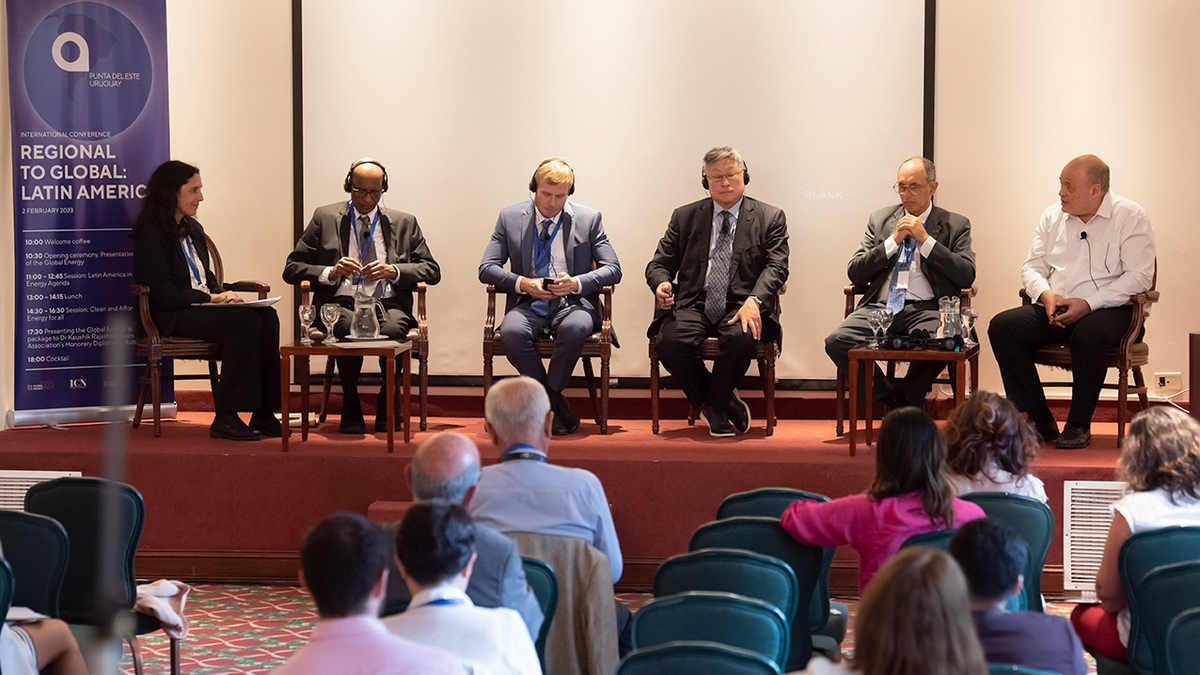Latin America. The Global Energy Association held the first Regional to Global Conference in Latin America, a meeting that focused on the role of Latin America in the energy world, as well as the perspectives of the use of clean energy in the region.
The event was held at the headquarters of the integration association MERCOSUR (Argentina, Brazil, Paraguay, Uruguay), in the Uruguayan city of Punta del Este. Participants included Alfonso Blanco, secretary general of the Latin American Energy Organization (OLADE); Fitzgerald Cantero, National Director of Energy of the Ministry of Industry, Energy and Mining of Uruguay; and Vadim Titov, president of Rusatom – International Network, participated in the first session entitled "Latin America in the Global Energy Agenda".
According to a statement from the organization, Fitzgerald Cantero emphasized that renewable energies play a key role in the energy supply of Latin American countries, while ensuring relatively low generation costs.
Cantero said that "the share of renewable energies (except hydroelectric) in primary energy consumption in Latin America is 33%, while for the rest of the world this figure is 18%. However, due to the differentiated structure of renewable sources, this does not translate into an increase in the cost of electricity for end customers. In addition, the energy system is less likely to be destabilized due to fluctuating commodity prices and shortages of fossil fuels. That's why the region's energy system proved its strength last year."
On the other hand, Alfonso Blanco mentioned, regarding the development of the energy sector in Latin America, that "the energy programs of our countries must be oriented not only to transit the energy transition and diversify energy sources, but also to promote socioeconomic development and improve the standard of living of the citizens of our countries", Blanco emphasized
In his opinion, large oil and gas reserves are the main source of development in the region." Budget revenues from oil exports in Brazil reach 20%, in Venezuela more than 40% and in some years reached 60%, while in Colombia and Mexico this figure is 10% and 13%, respectively. Therefore, a single rejection of oil is, in fact, a rejection of budget revenues, a rejection of our development opportunities."
Vadim Titov, made his contribution and stated that "nuclear power plants form one of the four sides of the green square, which also includes hydro, solar and wind power. However, wind, solar and hydropower production can be affected by calm, cloudy and dry weather, while nuclear power plants can supply consumers 24/7."
At the same time, the cost of electricity generated in nuclear power plants does not depend on fluctuations in uranium prices, which makes possible state strategic planning for the coming decades. That is why nuclear power plants are an integral part of the low-carbon energy mix of the future," said Vadim Titov.
The second session of the event, which was dedicated to the challenges of the availability of clean energy in the region and the development of nuclear energy in Latin America, was moderated by Lorena Di Chiara, researcher at the Observatory of Energy and Sustainable Development of the Catholic University (Uruguay). The discussion involved distinguished figures: Kaushik Rajashekara (USA), winner of the Global Energy Prize, Distinguished Professor at the University of Houston; Ruben Chaer, Technical Manager of the Electricity Market Administration of Uruguay; Gonzalo Casaravilla, former president of Uruguay's National Department of Power Plants and Transmission; Ivan Dybov, Vice President of the Brazilian Association for the Development of the Nuclear Industry, President of the Rosatom regional center in Latin America, and William Byun (Singapore).
Gonzalo Casaravilla emphasized that achieving universal access to electricity is impossible without improving the well-being of the poorest countries in the region, including Haiti. While Rubén Chaer insisted on the issue of managing energy systems with a high proportion of renewable energies. Weather forecasts are taken into account by automated systems (robots and drones) that distribute the load among different types of power plants. This simplifies the operational balance of the electrical system."
William Byun drew attention to the importance of studying in depth microgrids that work on renewable energy sources. "An example is Indonesia, a country consisting of 17 islands, of which only 3 are united in a common network. The rest of the islands are supplied autonomously, which is relevant for Latin America, where a number of small settlements do not have access to electricity."
Ivan Dybov spoke about Brazil's new energy strategy, which envisages the commissioning of 8-10 gigawatts of nuclear power plants by 2050. "At the same time, the construction not only of large nuclear power plants, but also of small nuclear power plants. There is talk of power plants. This should increase the sustainability of the country's energy system, which currently relies heavily on hydropower."
Finally, Kaushik Rajashekara, winner of the Global Energy Prize, spoke about initiatives to counter energy scarcity based on examples from Indian reserves in the US and rural areas in India.
Overall, and according to the organization, the conference showed that in the coming years Latin America will demonstrate a growing demand for energy sources that combine low emissions and security in energy supply, including nuclear generation, as well as solar, wind and hydroelectric energy. This applies both to the region's most densely populated agglomerations, which are increasing energy demand due to economic growth, and to remote areas that need an uninterrupted power supply while isolated from the public grid.















